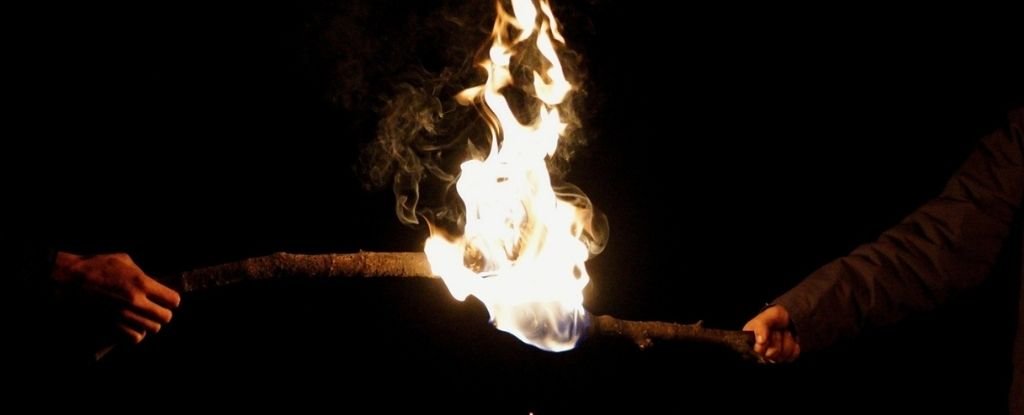Products You May Like
Once early humans figured out how to tame a wild flame – to cook food, warm the camp, extend daylight, and keep predators away – some scientists think the skill spread like wildfire.
If they’re right, it means early human populations right across Africa, Europe, and Asia were trading knowledge at least 400,000 years ago.
That’s well before modern humans began to disperse out of Africa and the first instance of ‘cultural diffusion’ in the archaeological record.
“To date, it was always thought that cultural diffusion actually started only 70,000 years ago when modern humans, Homo sapiens, started to disperse,” explains archaeologist Katharine MacDonald from Leiden University in the Netherlands.
“But the record for the use of fire now seems to show that this happened much earlier.”
The new analysis compared traces of fire made by hominins at archaeological sites across Europe, Israel, Asia, and northern Africa, drawing on data from decades of study.
Before 400,000 years ago, the authors say almost all the locations examined showed very little evidence of fire use.
However, from that point onward, an increasing number of sites were found with charcoal, charred bones, and heat-altered sediments.
The pattern remained consistent no matter the region, which suggests habitual fire use first emerged around the second half of the Middle Pleistocene.
While it’s possible that all of these hominin cultures figured out fire independently, the relatively quick spread across the Old World strongly suggests this skill was culturally diffused.
“Since multiple hominin subpopulations persisted and left evidence of fire use, it is unlikely that practices associated with fire use were transported by a single dispersing hominin subpopulation,” the authors write.
Of course, identifying traces of fire hundreds of years after the fact is incredibly challenging work, and we can’t always be sure what we’ve found actually came from a hominin-controlled flame.
The lack of fire evidence before 400,000 years ago should therefore be interpreted “with caution”, the authors note. Even after 400,000 years ago, the current data are patchy, especially in Africa and Eurasia, where data on H. naledi, H. sapiens, Neanderthals, Denisovans, and H. erectus are particularly lacking.
Still, fire-wrangling wasn’t the only skill that rapidly diffused across hominin cultures.
The authors also use data from anthropology, primatology, and the social sciences to show how other ideas, behaviors, and techniques spread over large distances via what were likely primitive social networks.
Roughly 100,000 years after the fire phenomenon, for instance, a special type of stone-knapping technology, known as the Levallois technique, began to emerge in a very similar way.
In an even shorter period of time than fire, this technique spread across northwestern Europe and the Middle East. The hand ax, in comparison, took hundreds of thousands of years to go from Africa to Europe.
On the other hand, unlike the use of fire, the Levallois stone knapping technique would have taken time to teach and learn. This implies strong social interactions between hominin populations in the Old World, not just fleeting encounters.
Genetic evidence has already shown there was mixing between different species of early humans, but the fact that many of these populations show similar behaviors and techniques suggests they were in contact in more ways than one.
“Members of these subpopulations therefore encountered each other, repeatedly and over very long timespans, providing a canvas for cultural diffusion,” the authors write.
If the team is correct, then that means large-scale social networks were already in place before modern humans came along.
Given that cultural diffusion is so often considered a trait unique to our species, that’s a controversial hypothesis. But the authors are ready to have it challenged – if only to stimulate further discussion.
Like early humans, hundreds of thousands of years before, they are now passing on the flame.
The perspective was published in PNAS.
